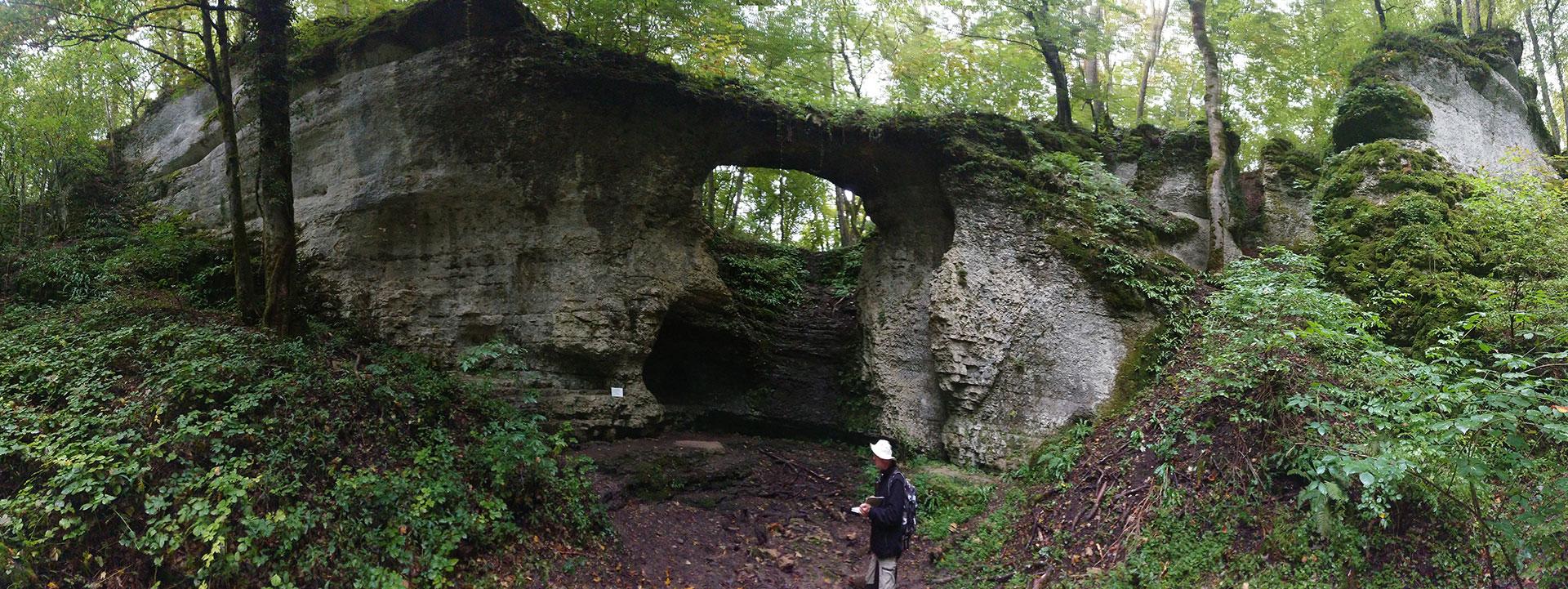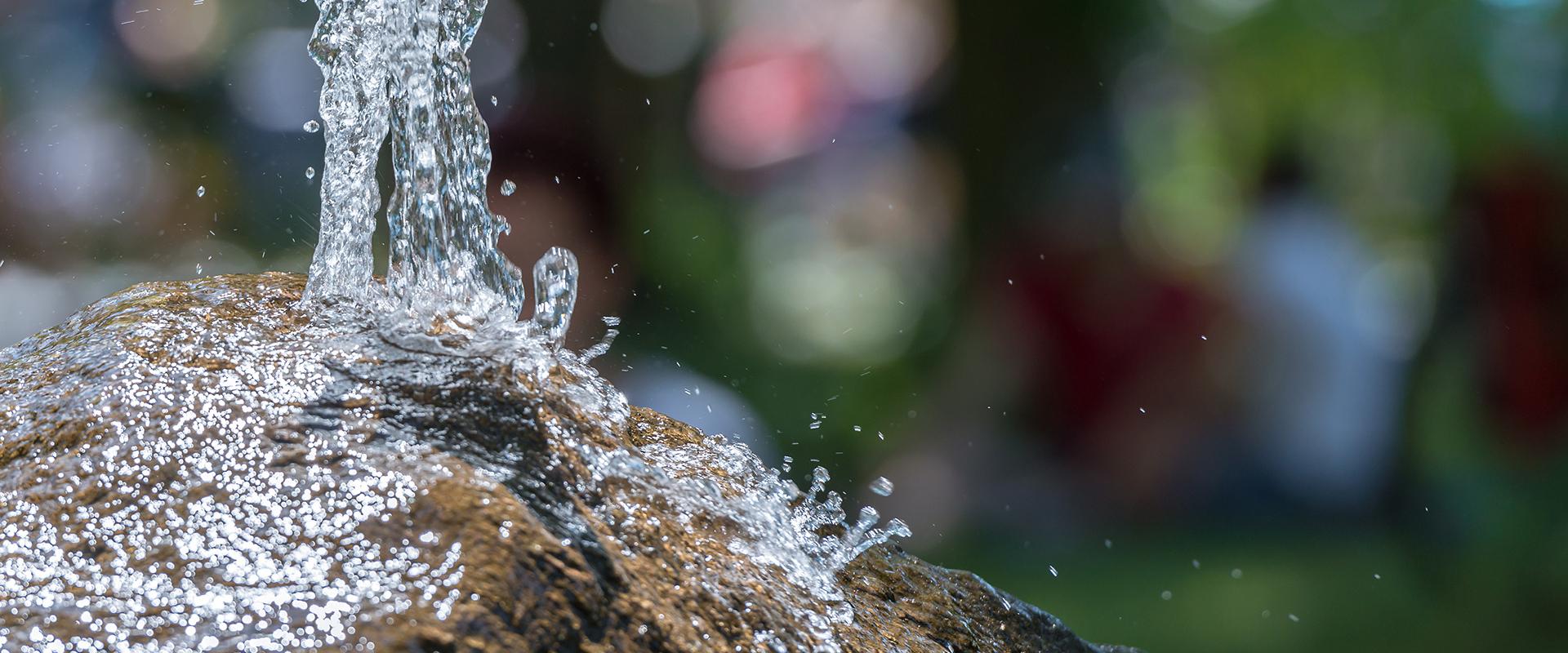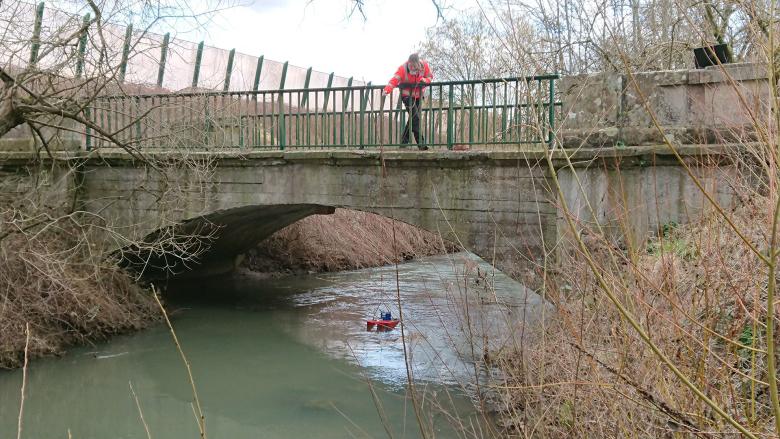The need
Following a preliminary review of the available literature by BRGM, the Jurassic limestone aquifer was identified as a potential water resource. AGB thus asked BRGM to characterise the aquifer and its potential in more detail.
Results
In order to delineate aquifers and identify geological structures conducive to the circulation of groundwater, a geological map of the limestone was made.
The geological study revealed the presence of outcropping limestone and underlain limestone, forming a vast, flat-bottomed syncline. These limestone formations have faults that allow surface water to infiltrate when they are not covered by impermeable ground. The weathering/dissolution of the rock, which forms decimetre- to metre-sized cavities, bears witness to this seepage and the probable presence of karst formations.
At the same time, a hydrogeological study of the outcropping limestone, based on field measurements (flow and conductivity measurements of springs and watercourses), confirmed the results of the geological investigations. The measurements taken indicate areas where river flow is lost near fault networks, and high variability in flow between low and high water, which is characteristic of karst contexts.
The groundwater in the outcropping limestone is sensitive to weather variations and surface pollution, making it less sustainable in terms of both quantity and quality. It therefore seems less suitable than underlain limestone, where the groundwater is potentially more resilient to drought episodes and better protected against surface pollution. The results of this study therefore tend to favour underlain limestone for the ongoing programme to search for new water resources.

Our aquifer is fragile, especially at low water levels, and we regularly run out of water. We therefore need to diversify our resources and secure our drinking water supply. We asked BRGM to provide us with more detailed information about our aquifer and its potential. Thanks to this study and the expertise of the BRGM teams, we will be able to carry out exploratory drilling in 2024, and hope that it will be successful.
Using the results
Additional investigations (geophysical seismic reflection campaign) have been designed, based on the results of the study. This new data will help to clarify the geometry and structuring of the underlain limestone formations, and will be used as input to construct a 3D geological model. This model will then be used to determine the location of future exploratory boreholes.
The partners
- Communauté d’agglomération du Grand Belfort






